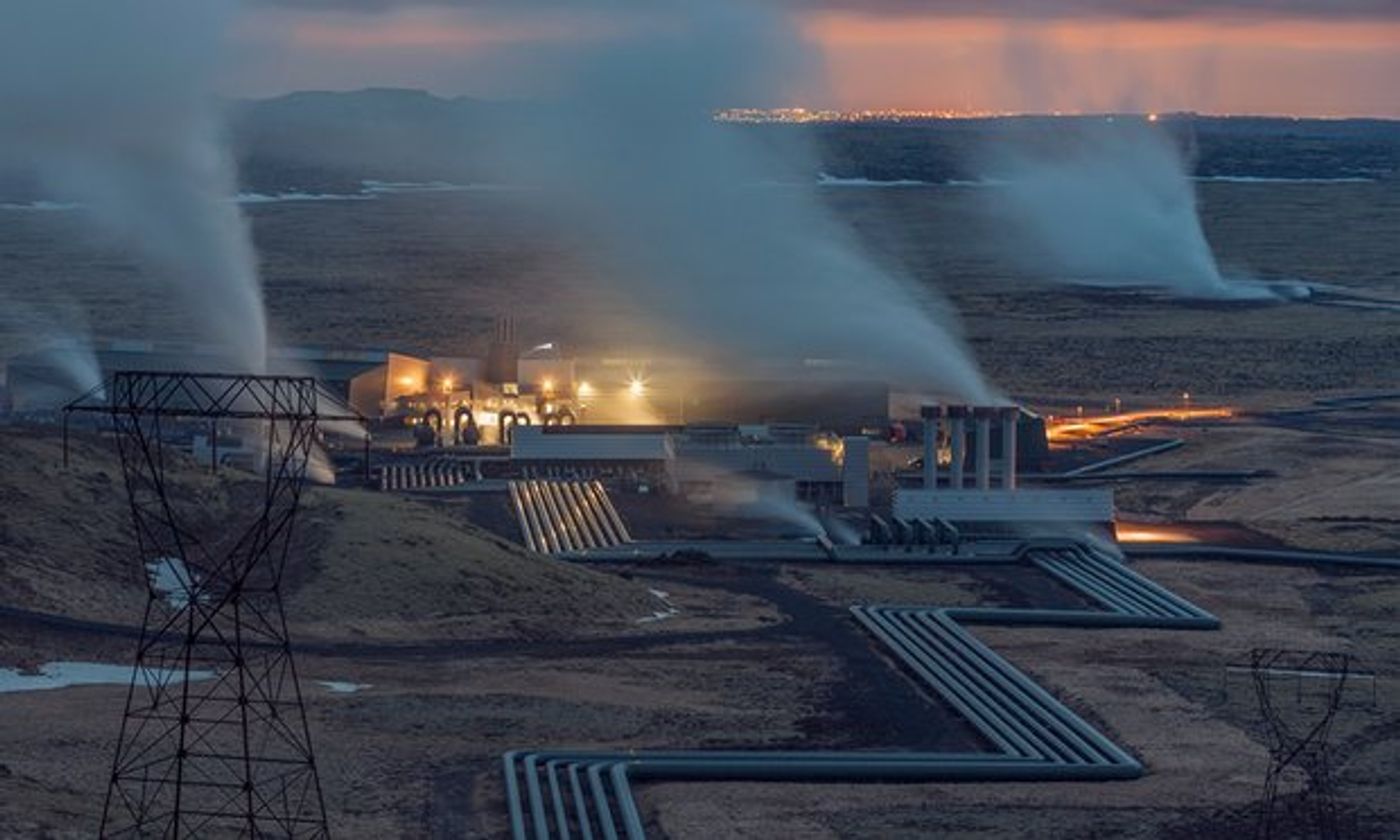Iceland Pinpoints Geothermal Drilling Locations
We are constantly looking for new energy sources. In Iceland, given the country’s unique geology, six thermal energy power plants supply the nation with electricity and hot water. Iceland sits on several volcanic regions and because the Earth’s mantle is is located relatively close to the crust in those areas, only shallow drilling is necessary to extract the heat. Yet although engineers need only have shallow boreholes and short pipes to the power plant in order to take advantage of this energy source, situating a power plant near an active volcano of course includes a certain risk level. It is for this purpose that scientists have spent so much time investigating appropriate drilling stations, the results of which are published in a new study in the Journal of Geophysical Research: Solid Earth.
The Guardian explains the geothermal energy extraction process: “To access the potential energy under the surface, wells are drilled thousands of metres into the ground, penetrating reservoirs of pressurised water. Heated by the Earth’s energy, this water can be more than 300C in temperature, and when released it boils up from the well, turning partly to steam on its way.” This steam can be used to turn turbines in a power plant, which then generates electricity. But the big question is, where do we drill?
"The study includes data with extremely high precision. Data from 1967 to the present, together with the very best modelling software, have yielded the best picture to date of the anatomy of the divergent boundary," says Md. Tariqul Islam, lead author of the article, which has is entitled Continuous subsidence in the Thingvellir rift graben, Iceland: Geodetic observations since 1967 compared to rheological models of plate spreading.
The researchers investigated three unique regions of the divergent ridge (defined as an area where the ocean plates are slowly sliding away from each other) that crosses Iceland from southwest to northeast. Science Daily elaborates how the slow movement and separation of the ocean plates can cause cracks in Earth's crust, which can allow hot magma from the planet's interior to flow to the Earth’s surface. This explains why a large number of volcanos have developed along the divergent boundary.
Of the six geothermal power plants in Iceland, Hellisheiði (pronounced “het-li-shay-thee”) is the queen of the crop. Located near the Hengill volcano in the south-west of the country, it has been operating since 2010 and is Iceland’s largest power plant, able to produce 300MW of power.
“You don’t see a 300MW geothermal power station very often,” says Marta Rós Karlsdóttir, managing director of natural resources at ON Power, the publicly owned energy company that runs Hellisheiði. “It’s big, but it’s also state of the art and very efficient.”
Hellisheiði’s maximum output reaches 303MW of electricity, making it one of the three largest single geothermal power stations in the world. The steam powers several of the plant’s seven turbines. The remaining water from the process is depressurised to produce more steam, which is then in turn used to power the station’s other turbines.
Hellisheiði is special because it not only produces electricity, but also provides hot water supply for the city of Reykjavik. “We have a 26km pipeline down to Reykjavik,” says Karlsdóttir, “transporting hot water at around 80C.” The Guardian reports that once the steam has been extracted from the power station, the leftover geothermal water is diverted to a heat exchanger, where it is used to heat up a supply of fresh water that Icelanders can use for domestic tasks. The mountain is naturally steep enough so that gravity carries the water to the city, and the pipe is so well insulated that it arrives only a degree or two cooler. Talk about innovative technology! The video below shows another of Iceland's iconic geothermal stations.
Sources: Science Daily, The Guardian









